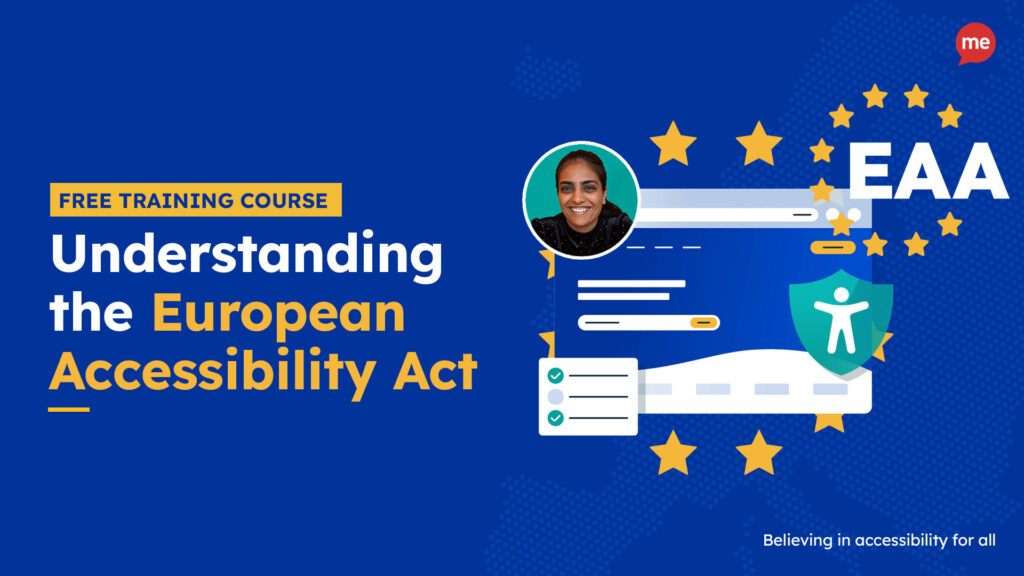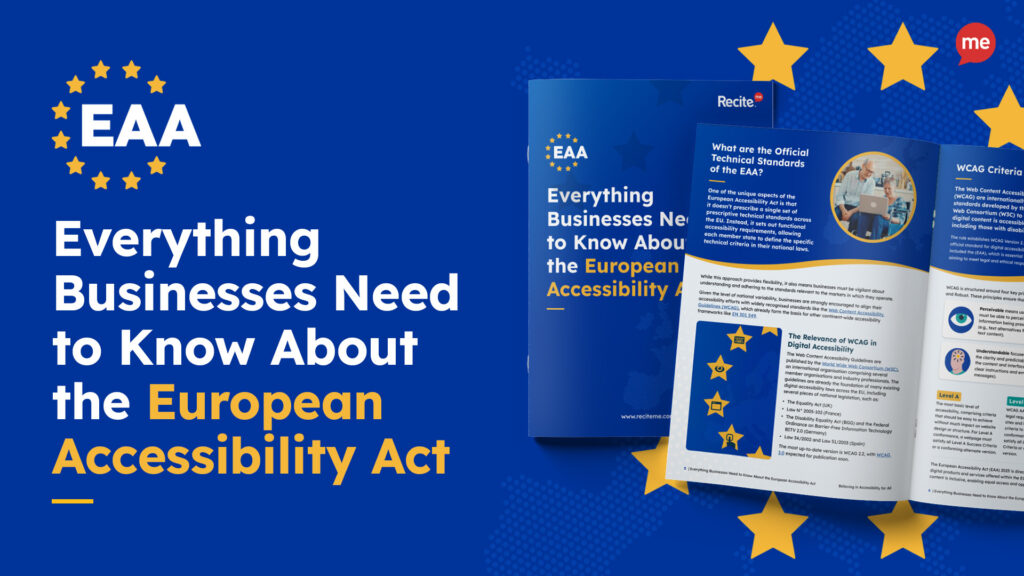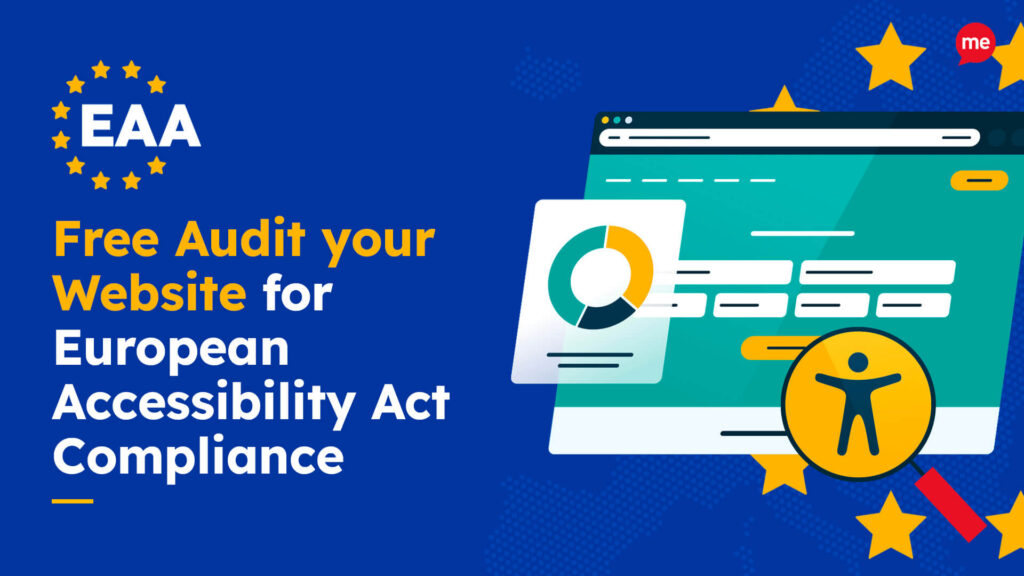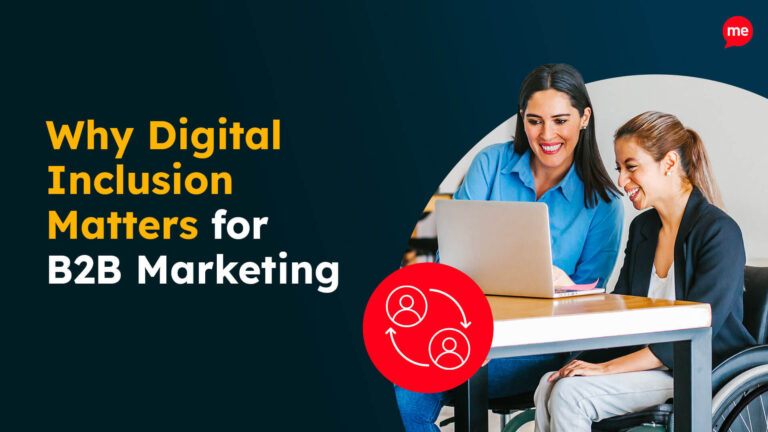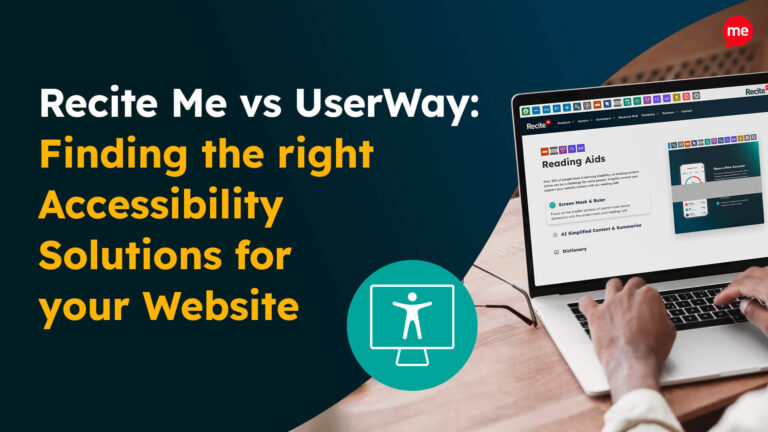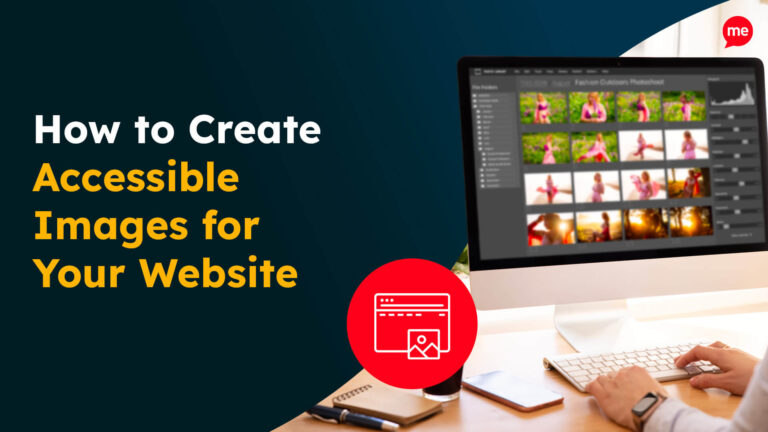Get a free EAA Compliance Audit of your Squarespace Website
Download NowSquarespace has long been a go-to platform for entrepreneurs, creatives, and small businesses that value design, simplicity, and visual impact. However, building aesthetically doesn’t necessarily equate to building accessibly. Even the most stunning site can fall short. And unfortunately, many do.
If your website is built on Squarespace and serves users in the European Union, accessibility is no longer optional. The good news is that you don’t need to be a developer to make your Squarespace website more accessible. With the right tools, knowledge, and a few key updates, you can significantly reduce your compliance risk while simultaneously improving user experience.
Understanding the European Accessibility Act (EAA)
The European Accessibility Act (EAA) is a new EU-wide law designed to make digital products and services more accessible to people with disabilities. It applies to websites, mobile apps, eCommerce platforms, and several other digital tools.
The law came into effect on June 28, 2025, and has two key deadlines:
- New content: New websites, apps, and content published after June 28, 2025, must be accessible from day one.
- Existing content: Content published before June 28, 2025, must be brought into compliance by June 28, 2030.
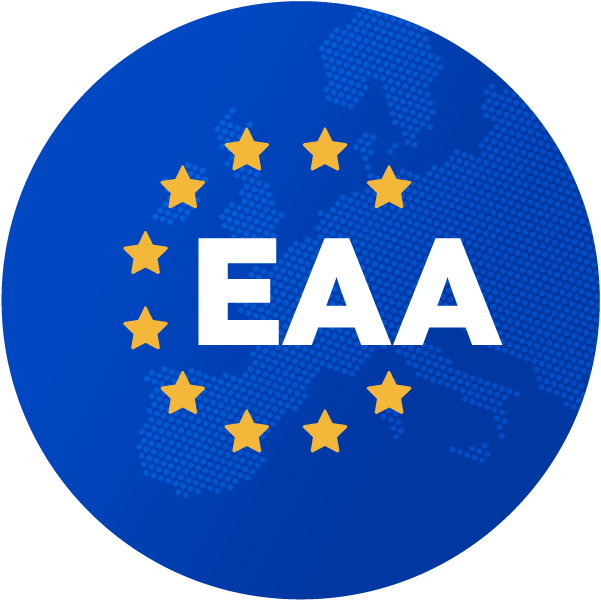
EAA compliance standards are modelled around the Web Content Accessibility Guidelines (WCAG) 2.1 Level AA. Widely considered the global gold standard for digital accessibility, WCAG criteria focuses on making digital content perceivable, operable, understandable, and robust (the POUR principles) to ensure as many people as possible can access your content, regardless of ability.
Does the EAA apply to your squarespace site?
If your Squarespace website offers products or services to people in the European Union, then yes, the EAA likely applies to you, even if you’re a small team.

Contrary to some of the myths currently circulating, the EAA doesn’t just target large corporations or government platforms. That said, there is a limited exemption for microenterprises that meet both of the following criteria:
- Fewer than 10 employees
- An annual turnover or balance sheet total under €2 million
However, exemptions are not guaranteed. Each member state has discretion over how and when it applies, and certain industries (like banking, telecom, or transport) may still require full compliance, regardless of company size. So, your safest bet is to assume the EAA applies and act accordingly. Not only does this reduce your legal risk. It also ensures your website is more inclusive and usable for a wider audience.
Make sure your website meets the European Accessibility Act with our easy-to-follow EAA checklist. It covers all the key steps to get compliant before the deadline and helps you avoid penalties. Get started today!
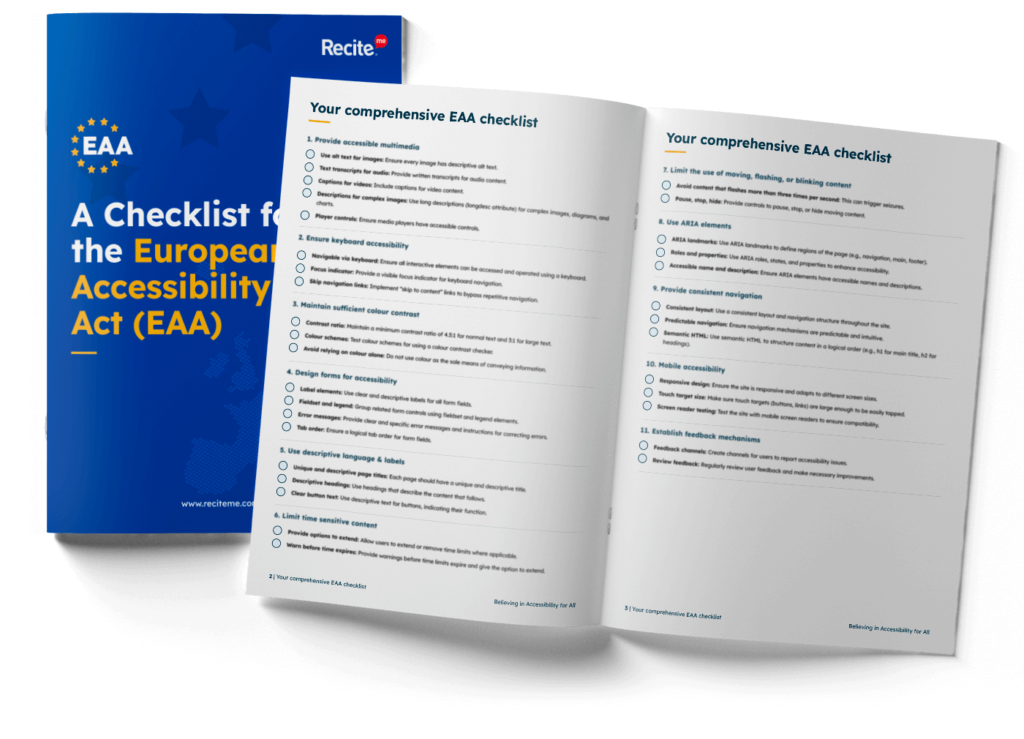
Why does EAA compliance matter?
The most significant risks of non-compliance are legal and financial. Enforcement mechanisms vary by EU member state, but the consequences can be severe. Possible repercussions include:
- Administrative EAA fines ranging from €5,000 to €20,000 per violation.
- Ongoing daily fines up to €1,000 per day until resolution.
- The suspension of market access for non-compliant products and services.
- Non-compliance lawsuits.
Aside from legal and financial costs, your company may also face additional watchdog scrutiny and be tested by negative media coverage, social media backlash, and poor customer reviews following a compliance breach.
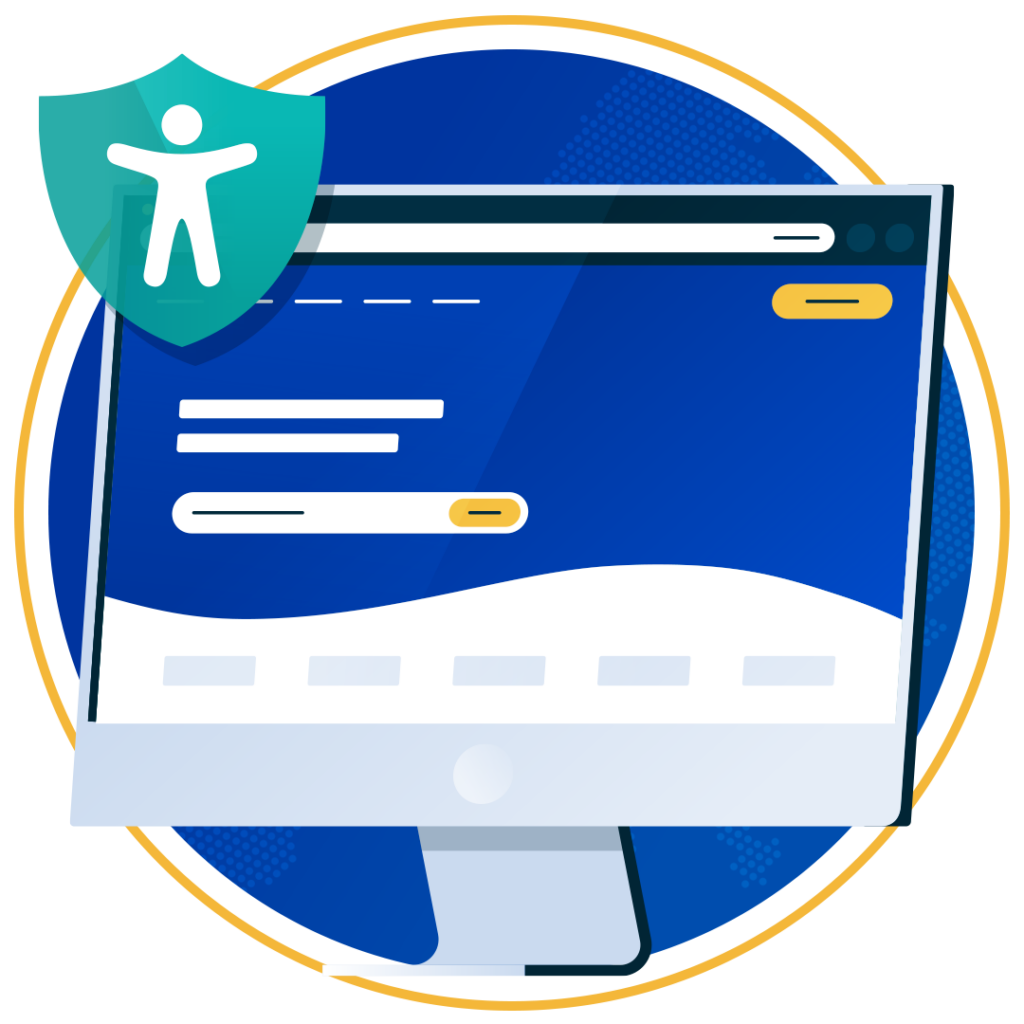
How accessible are Squarespace websites?
While some Squarespace templates are built with accessibility in mind, they don’t automatically guarantee compliance with EAA regulations, as many fall short of WCAG 2.1 Level AA standards when adopted without additional customisation. For example, some popular templates lack sufficient colour contrast, use decorative headings without semantic structure, or rely heavily on visual elements that aren’t screen reader friendly.
The bottom line here? While Squarespace offers a few helpful accessibility features to provide a solid starting point, it’s up to you to ensure your content is inclusive, your design choices are user-friendly, and your site functions well for people using assistive technologies.
Common accessibility barriers on Squarespace websites (and how to fix them)
Even with the best intentions, accessibility barriers can easily creep in, especially if you’re using visual templates without thinking about how users with disabilities interact with your site.
Here are some of the most common EAA compliance issues we see on Squarespace websites and tips to help you fix them.
1. Missing or incomplete alt text
The problem: Images without descriptive alt text (alternative text) exclude website visitors with visual impairments, those using screen readers, and anyone browsing using non-visual assistive technologies, leading to poor UX and reduced engagement.
The fix: Squarespace makes it easy to add alt text to images through image block settings. Simply click on the image block → “Edit” → “Image Alt Text.” When writing alt text, avoid vague or generic labels. Instead, write concise descriptions that accurately capture the purpose of the image.
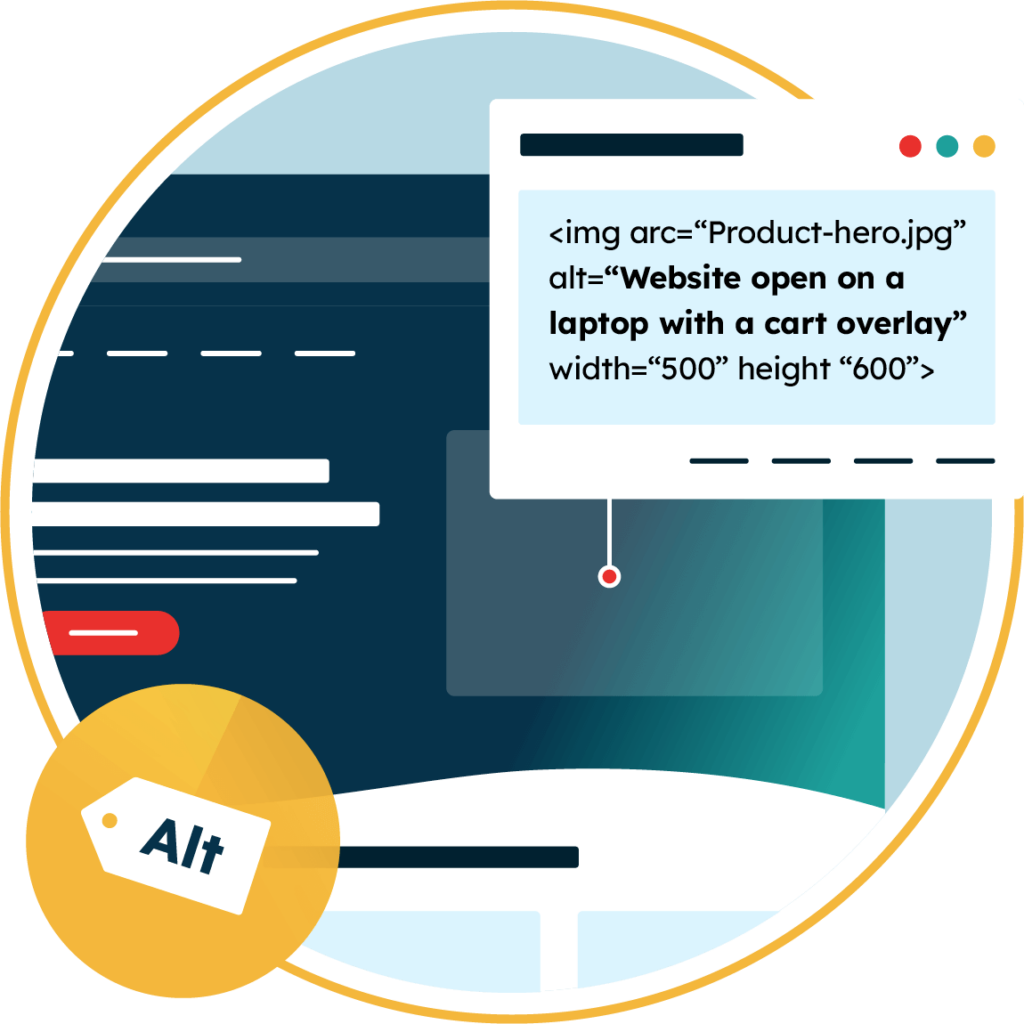
2. Low contrast in template designs
The problem: Many of Squarespace’s most popular templates use light fonts on light backgrounds or thin typography that fails to meet colour contrast ratio requirements. In either case, reading becomes difficult or impossible for readers with low vision.
The fix: The Style Editor allows you to customise colours, fonts, and spacing to improve readability. Aim for a contrast ratio of at least 4.5:1 for normal text and 3:1 for large text. Online contrast checkers can help you test your design choices.
3. Improper use of headings
The problem: Headings help all users (but especially screen reader users) to understand the structure of your pages. However, it’s easy to misuse headings in Squarespace by styling text to look like a header without actually assigning the correct heading tag.
The fix: Use the “Heading” block rather than manually styling with bold or larger fonts, and maintain a clear hierarchy. You should have only one H1 per page (usually the page title), followed by H2s for main sections and H3s for subpoints.

4. Keyboard navigation issues
The problem: Some interactive elements, like lightboxes, sliders, and pop-ups, can interfere with keyboard navigation or trap users who can’t use a mouse or trackpad in inaccessible areas of the page.
The fix: Most content blocks are responsive and support basic keyboard navigation, but it’s best to avoid adding custom code or third-party plugins that might compromise accessibility. Test your site using only the Tab and Enter keys to check that all menus, buttons, and form fields are reachable and that a visible focus indicator shows where you are on the page.
5. Uncaptioned videos
The problem: Squarespace makes it easy to embed videos. However, captions aren’t always included by default, especially if you’re using background or banner videos.
The fix: Improve video accessibility by uploading content with burned-in captions. You can also include a text transcript directly below the video block for added clarity. Alternatively, host your videos on platforms like YouTube or Vimeo where captions can be enabled.
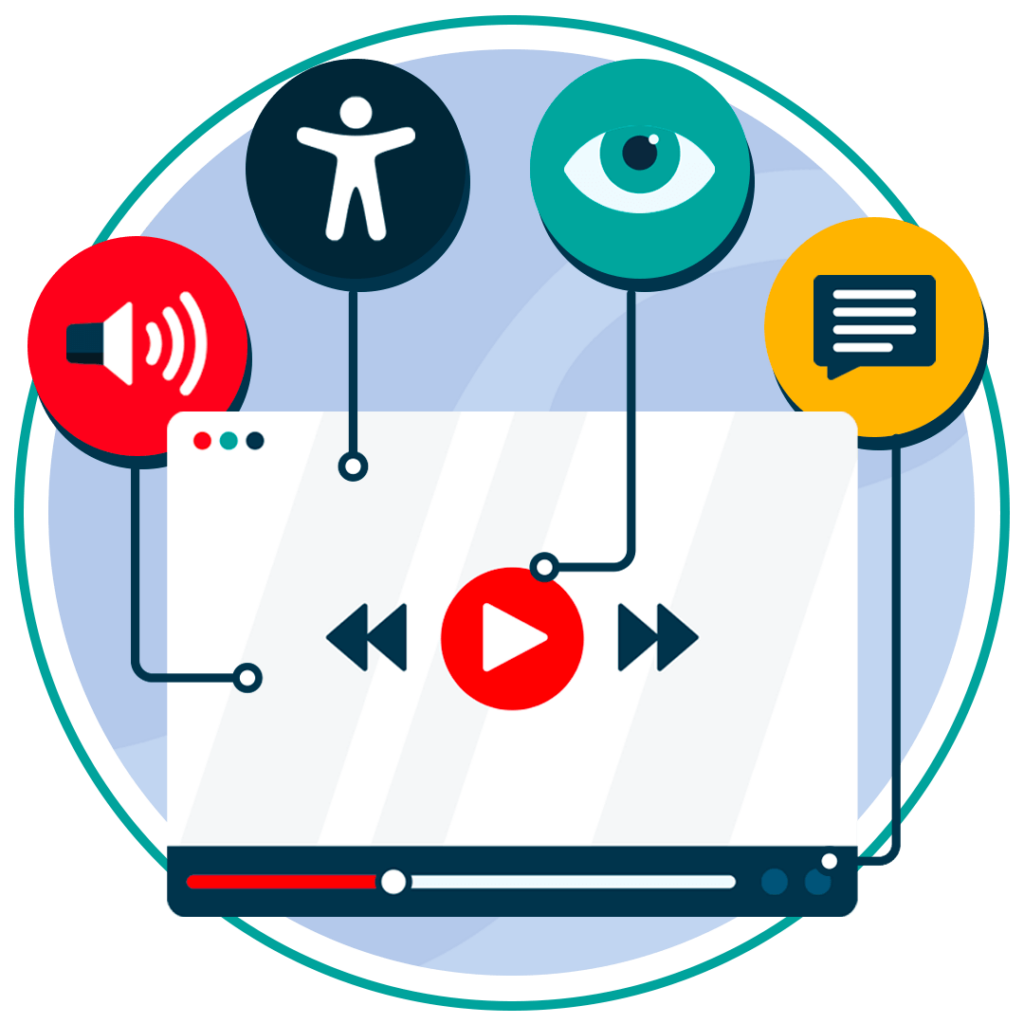
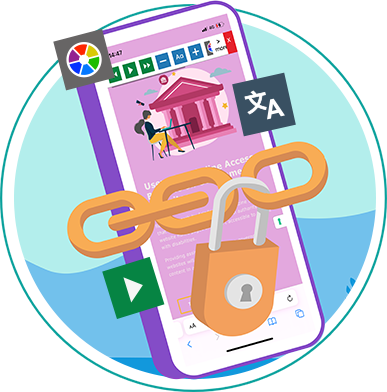
6. Mobile accessibility problems
The problem: Some layouts that look great on desktop become difficult to navigate on smaller screens. While this applies to all users, mobile accessibility is particularly important for users with motor impairments and those who rely on screen readers.
The fix: Use Squarespace’s built-in mobile preview to review your site on different devices. Ensure buttons are large enough to tap, text remains readable when zoomed in, and navigation elements are spaced out appropriately.
Tools to help you build an EAA-compliant Squarespace site
You don’t need to be an accessibility expert to make meaningful improvements and get your site up to standard. All you need is the right tools, knowledge, and guidance. Here are some essentials to help you get started.
1. Squarespace’s inbuilt accessibility features
Squarespace provides some helpful built-in tools, you just need to use them intentionally. It also maintains a basic accessibility overview to help you understand the platform’s features and limitations, making it easier to spot where additional accessibility efforts may be required.
2. Automated accessibility checkers
Automated tools like Recite Me’s Accessibility Checker can quickly scan your Squarespace site for common issues, flag areas of non-compliance, and generate a prioritised list of fixes for you to work through.
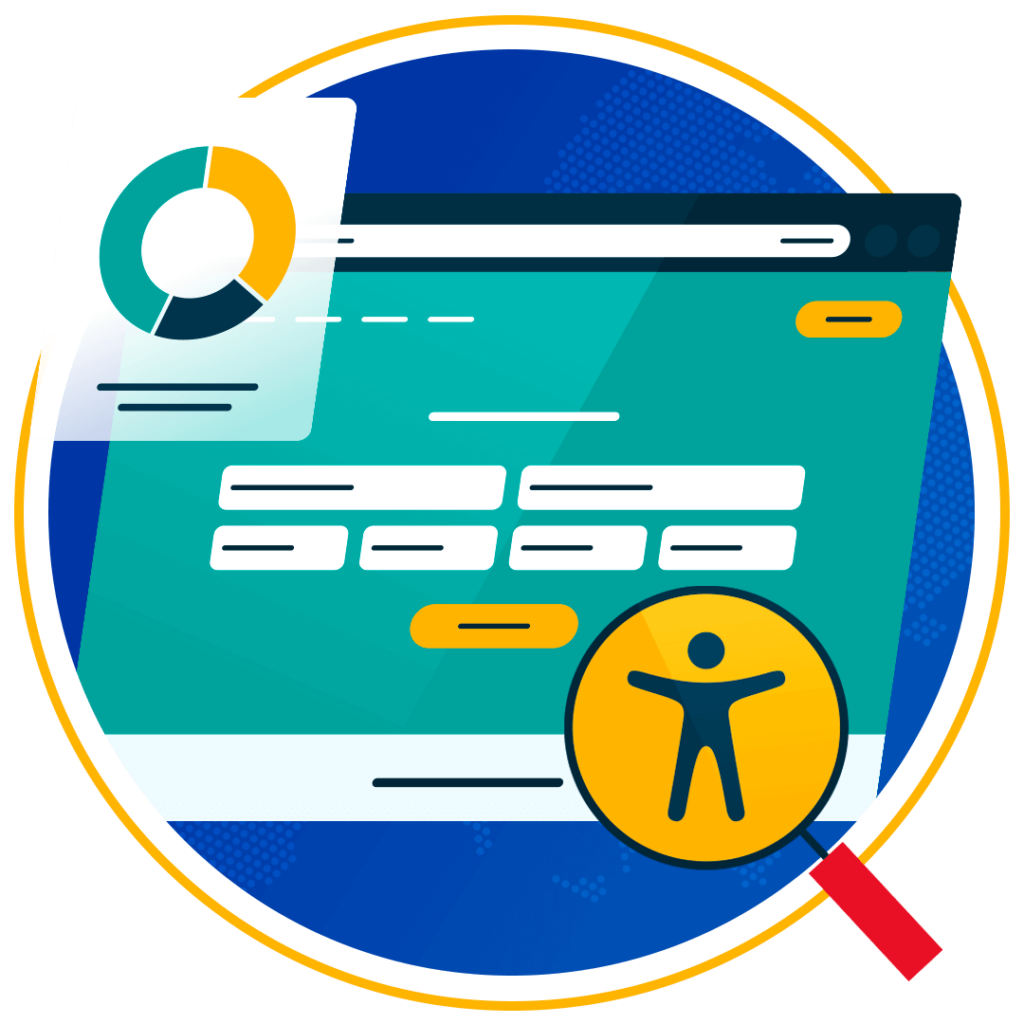
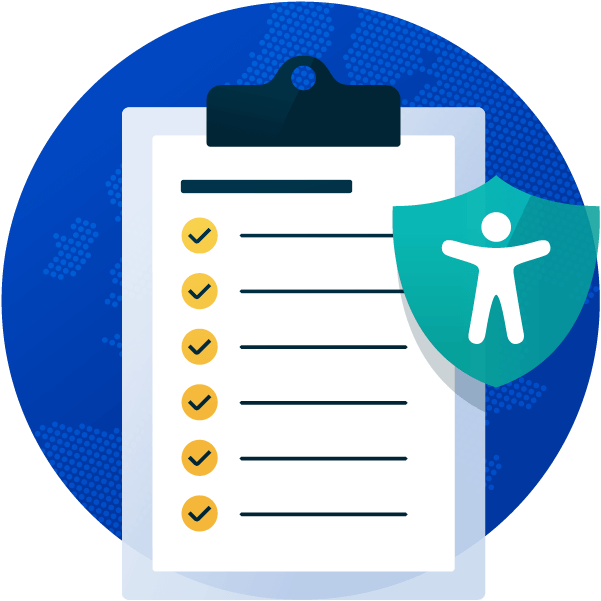
3. Manual compliance checklists
Manual checks are essential for spotting usability barriers that software might miss. Resources like an EAA Compliance Checklist help you conduct thorough manual reviews to catch any lingering non-compliance issues.
4. EAA accessibility training
Web accessibility isn’t just a developer’s job. Nor is it a checklist item. It’s a shared responsibility. Investing in EAA compliance training ensures that everyone involved understands the importance of building accessibility into their workflows.
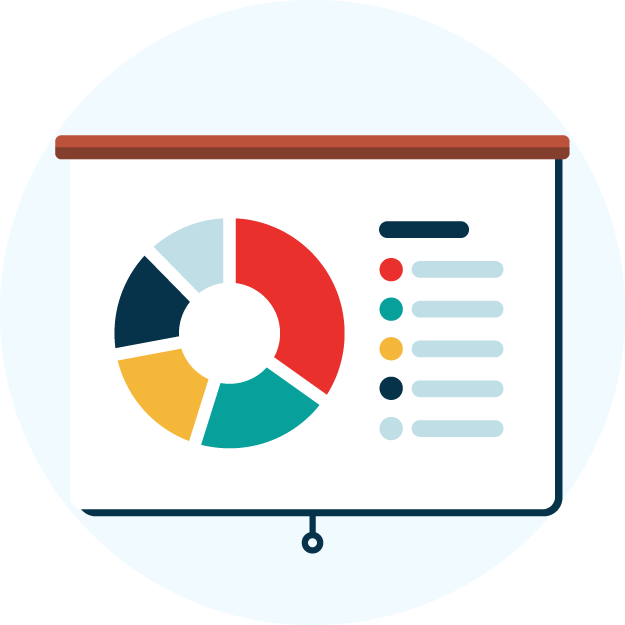
5. Assistive technology for end users
One of the best ways to boost on-site accessibility is to give users control over their experience. Solutions like the Recite Me Assistive Toolbar add functionality by allowing your website visitors to change font size and spacing, adjust colour contrasts, translate content, utilise text-to-speech in multiple languages, and more.
Checking for EAA compliance is now easier than ever. At Recite Me, we offer a free website audit to spot any issues related to the European Accessibility Act and WCAG. You’ll get a clear action plan to help improve your website’s accessibility and meet EAA compliance.
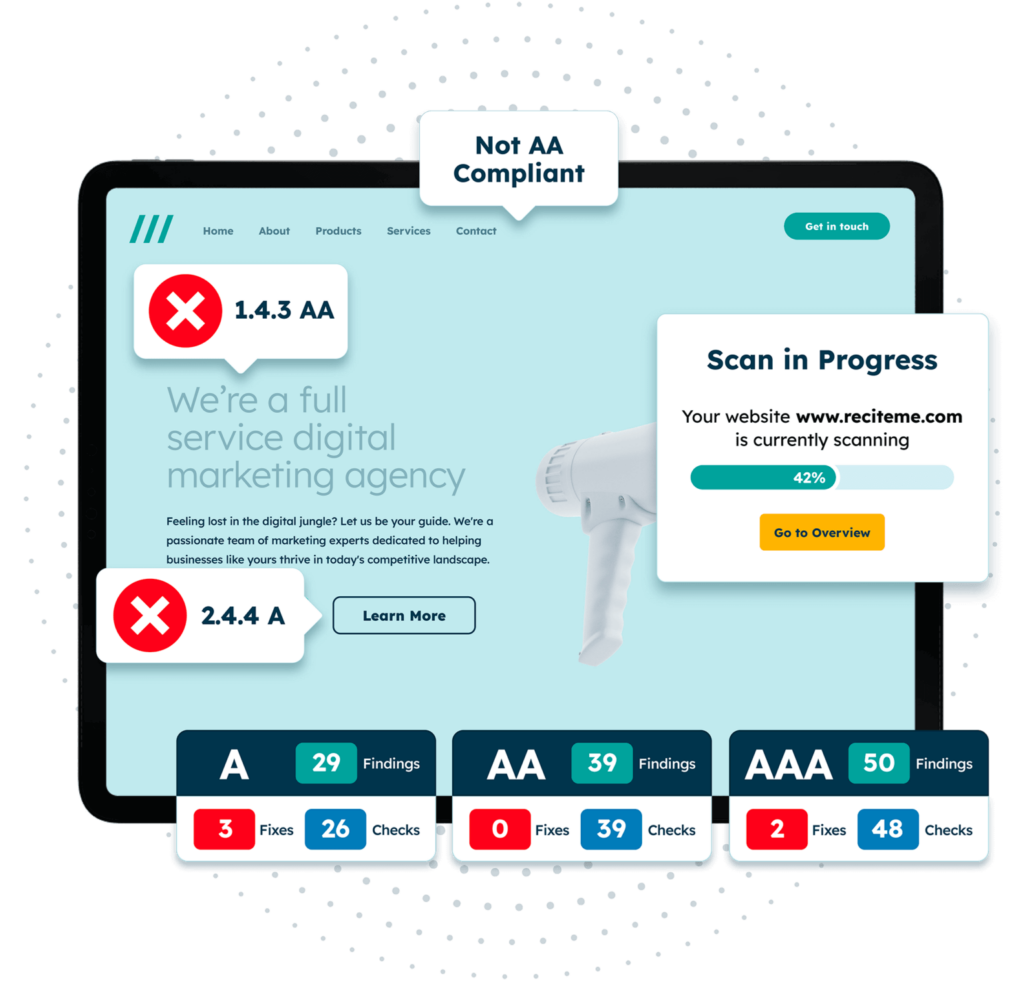
Make your Squarespace website EAA compliant before it’s too late
The EAA isn’t just hyperbole or some far-off regulation. It’s already active. And, while 2030 may feel like a generous grace period for existing content, any new Squarespace pages, updates, or site launches must meet the new requirements.
The key takeaway here? If your site isn’t already compliant, the time to act is now.
Need help getting started? Run a free EAA compliance check today to see how your website performs, or book an accessibility consultation with one of Recite Me’s experts for tailored guidance on improving your Squarespace site for EAA compliance.
Need more help becoming EAA compliant?
The following resources are packed full of actionable tips and expert advice for making your digital content compliant with the European Accessibility Act:
Free EAA Compliance Training
Take the first step to European Accessibility compliance by completing our EAA training course.
Free EAA Compliance Guide
Ensure your organisation is meeting the necessary requirements for European Accessibility Act compliance.
Free EAA Audit of your Website
Download a free accessibility check of your website. This report will highlight any EAA non-compliance and how to fix it.

